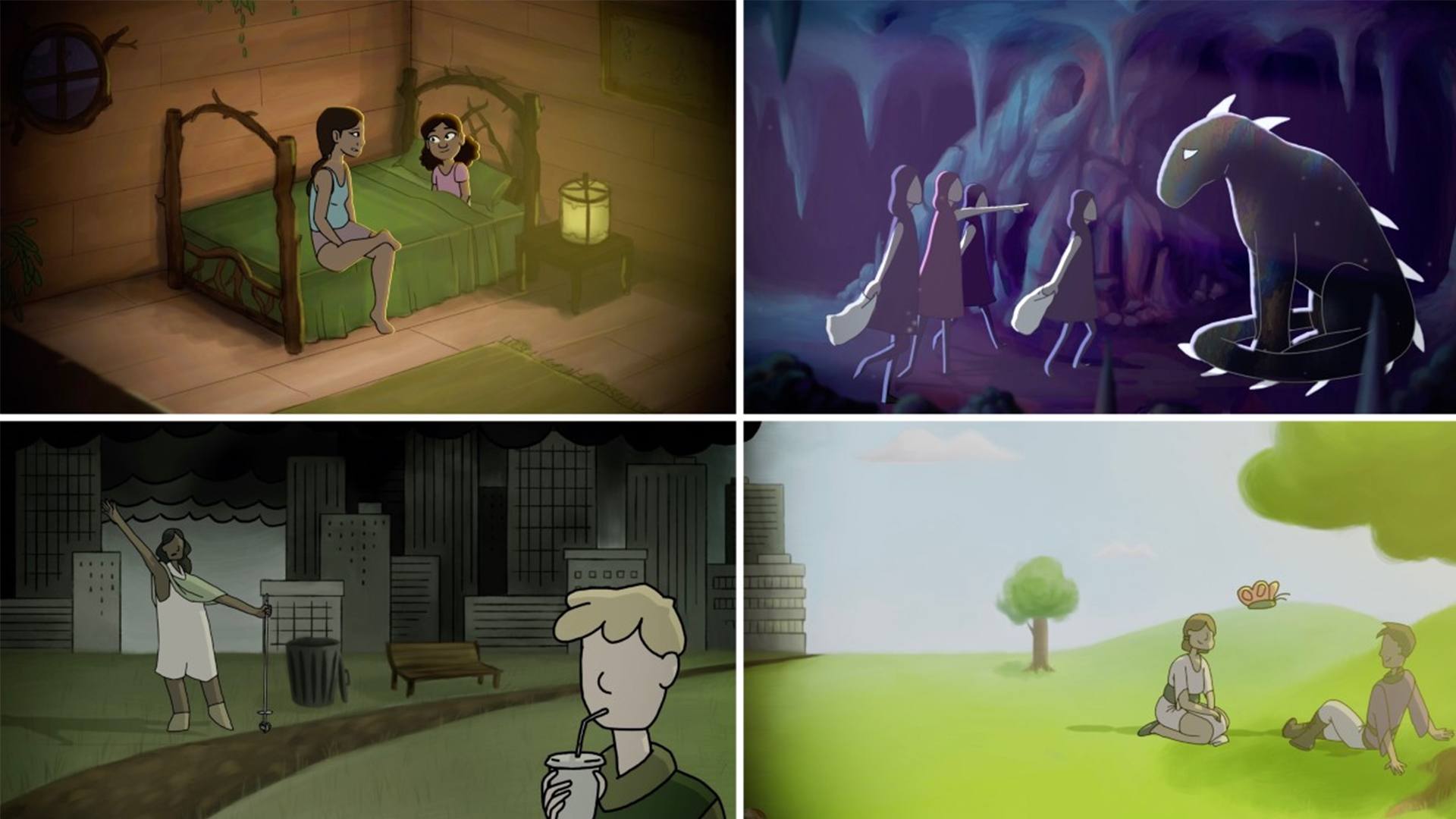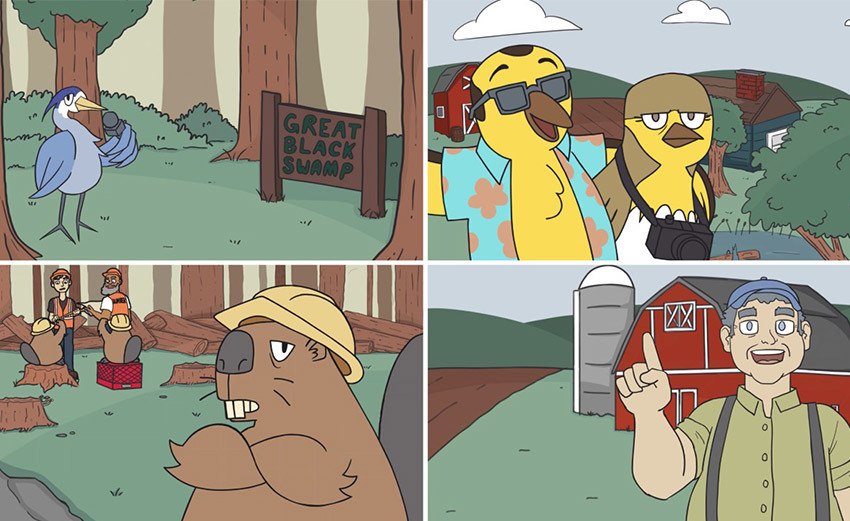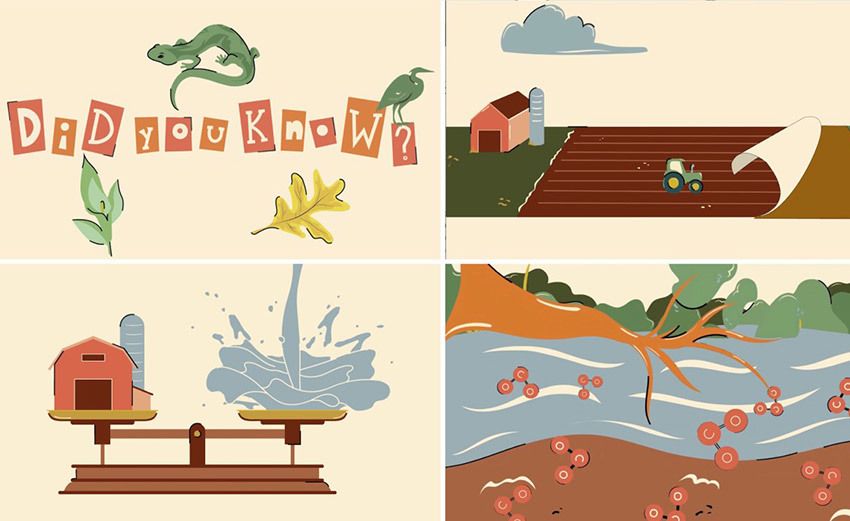
BGSU digital arts students combat climate change using animation
Animated public service announcements promote missions of environmental groups

Animation may play a role in combating a climate disaster. Students in a Bowling Green State University digital arts course put their skills to good work to help three environmental organizations put a creative twist on environmental issues.
Students in Bonnie Mitchell’s Collaborative Digital Art Development class in the School of Art created animated public service announcements about plastic pollution, clean energy community action and filtering agricultural runoff to mitigate climate change. The animated PSAs were designed to help Algalita, Ohio Citizen Action Group and the Black Swamp Conservancy
“How do we help these organizations communicate their message in a manner that is appealing and effective?” Mitchell asked her students.
To solve this problem, they needed to understand more about the environment including the scientific, political and social issues related to each organization’s specific problem. The organizations each presented a lecture via Zoom, and the students completed additional research and proposed ideas in the form of storyboards to the clients.
After the organizations selected the proposal that best communicated their message, the students had to solve issues from technical to conceptual before they created the animated public service announcements.

They self-divided into four teams of four to five students that Mitchells called her “Dream Teams” because of their creativity, motivation and problem-solving skills. Team leaders John Fowler, David Bloom, Noah Diehl and Felix Bangert each volunteered to lead a team and oversee the progress, and many students helped out in more than one group.
The students discussed their strengths and weaknesses and used project management software to distribute the tasks. They used Zoom, Discord and other means of communication to keep everyone informed. Some students created the voice narration and sound effects, while others animated, designed background sand characters, created infographics or did the post-production work.
Additional team members included Savannah Baileys, Kiriana Byrd, Ally Henlein, Claudia Hoerr, Alexa Majahan, Carl Nothrup, Sara Pescosolido, Kiarra Reynolds, Megan Smith and Tynea Swinton. They represented digital arts and biology majors, ranging from sophomores to seniors.

Because of COVID-19, students had to work remotely, which created another challenge this year. Collaboration and communication were critical to the students’ success this year.
The class created two different animated public service announcements for the Black Swamp Conservancy, one about wetlands and a second about inhabitants of the Black Swamp. For Algalita, which focuses on plastic pollution, the PSA addresses a fundamental shift in the way people think about plastic rather than the more traditional effort to pick plastic trash out of the sea. The Ohio Citizen Action announcement looks at organizing and empowering people to advocate for public interests such as public health, environmental and equity issues and a sustainable future.
The animations will be posted on the organizations' social media sites and used to educate, incite action and change people’s belief systems. The goal of each organization and Mitchell’s students is to create a better future for everyone.
“Each year the animated public service announcements keep getting better and better,” said Rob Krain, director of the Black Swamp Conservancy and a BGSU alumnus. He has been instrumental in leading local environmental restoration efforts in northwest Ohio and has been involved in the collaborative class in previous years
“What stands out most about this group of students is their positive attitude and desire to use art to make a positive impact on the world. It has been an honor to work with such talented students and to see them mature into professionals that care deeply about their work, the clients and the other students in the class,” Mitchell said.
“They used their drawing skills to design backgrounds and characters and their understanding of human behavior and motion to make the drawings come alive.”
Additionally, they used a variety of software packages and had to problem-solve their way out of bugs in the software, unfamiliar features, computer crashes, competing deadlines and other critical issues.
“Throughout the process, they learned an immense amount and gained confidence in their ability to tackle any problem,” she said.
“Critical thinking and problem-solving skills are some of the most sought-after career-ready competencies,” Mitchell said, citing the National Association of Colleges and Employers Job Outlook 2019 survey. The class also focuses on collaboration and methods of working as a team to accomplish a major task, the No. 2 most important career readiness skill, according to the same survey.
“This type of class provides both classroom and hands-on experience developing these types of skills.”
For the past three years, Mitchell has used the class to partner with various environmental groups to address environmental issues. The projects have always aligned with the University’s focus as a public university for the public good. In addition to the organizations involved in the spring 2021 projects, the class has engaged in service-learning projects for organizations, including NASA, the Toledo Opera, Green Energy Ohio, BGSU Office of Campus Sustainability, Fresh Water Futures, Sierra Club Ohio Chapter, Citizen Climate Lobby and Green America.
In 2019, the class was awarded BGSU’s Kurt E. Hofmeister Outstanding Student Group Award for exemplary community-based learning experiences.
Media Contact | Michael Bratton | mbratto@bgsu.edu | 419-372-6349
Updated: 06/09/2021 10:19AM
